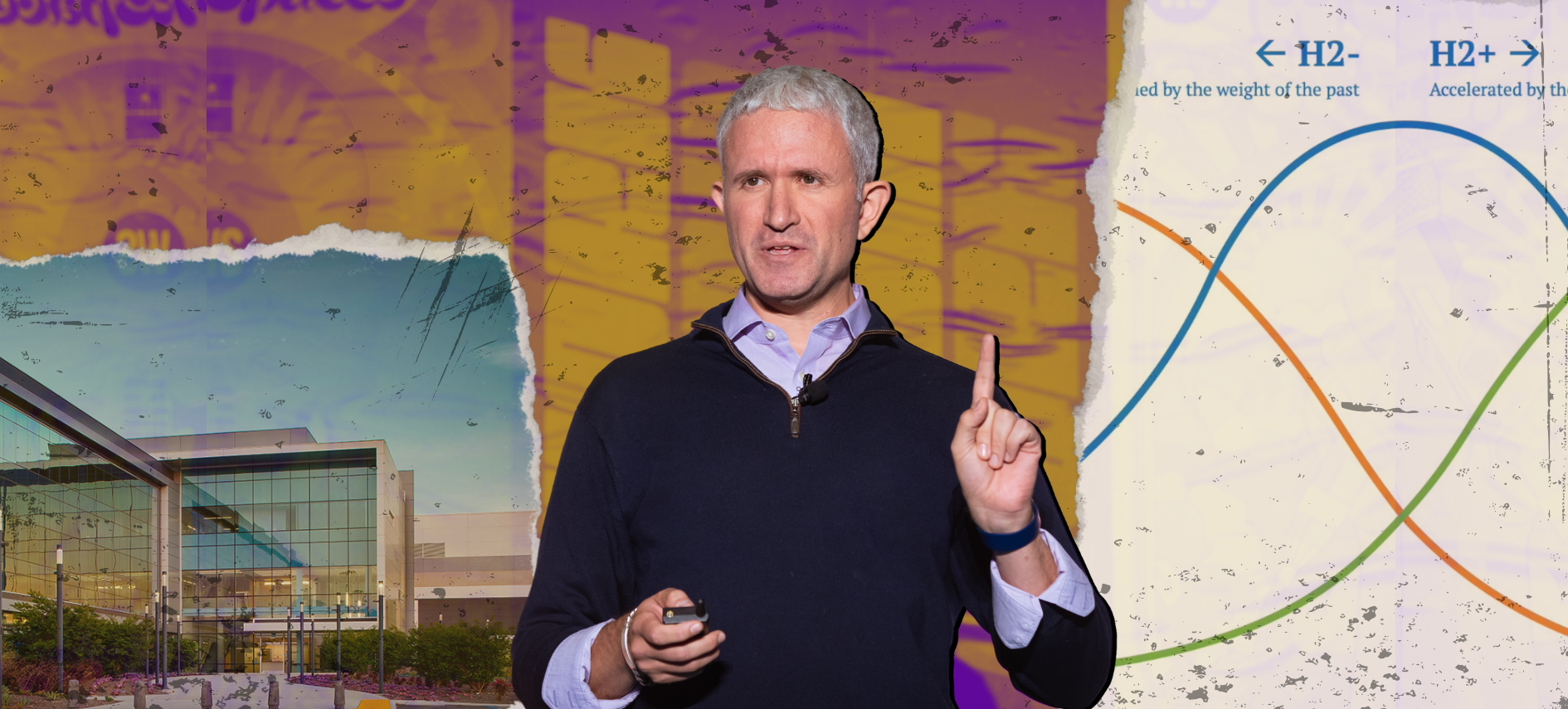At WorkSpaces, workplace strategist Phil Kirschner challenged corporate real estate leaders to reimagine the purpose of office spaces. With humor and candor, Kirschner shared a vision for the future that goes beyond desk booking systems and hybrid policies, urging the audience to embrace bold ideas and meaningful transformation.
From “Horizon 1” to “Horizon 2 Plus”
Kirschner introduced the “Three Horizons”* framework to explain where workplaces stand today. Horizon 1 represents the traditional office model—commutes, 9-to-5 schedules, and fixed seating charts. Horizon 3 imagines a radically different future, one where AI and remote-first work reshape everything. The challenge, Kirschner argued, lies in Horizon 2: the messy middle.

Most companies, he said, are stuck in “Horizon 2 Minus,” clinging to outdated practices with small adjustments, like desk-sharing policies or four-day workweeks. Instead, he urged leaders to aim for “Horizon 2 Plus,” where workplaces genuinely adapt to the needs of a modern workforce by prioritizing flexibility, collaboration, and purpose.
*Inspired by John Rousseau's article "The Future of Work in Three Horizons.''
Redefining the Purpose of the Office
One of Kirschner’s key insights was the need to clearly define why a building exists. “Pre-COVID, none of us could articulate the purpose of our office spaces,” he said. “Now, when we tell employees to return, they ask, ‘For what?’ and we don’t have a good answer.”
He highlighted examples like a leading biopharmaceutical company, whose renovated headquarters was designed with a singular mission: to accelerate clinical speed. For Kirschner, this clarity is critical. "If your office doesn't have a defined purpose that aligns with your company's goals, why should anyone come back?"
Acting Like a “Chief Places Officer”
Kirschner encouraged leaders to think of themselves as Chief Places Officers, taking ownership of how space serves people. This means:
- Creating a Charter: Define what your team stands for and how it aligns with the company’s broader vision.
- Reimagining Workflows: Build environments that foster collaboration and innovation, not just routine tasks.
- Leveraging Technology: Use AI and digital tools to create smarter, more efficient spaces.
“Real estate leaders need to start thinking beyond floor plans and leases,” Kirschner said. “It’s about creating places where people want to be.”
Building Toward the Future
Kirschner left the WorkSpaces audience with a clear challenge: don’t settle for minor tweaks. From experimenting with new meeting formats to rethinking entire campuses, workplace leaders have the opportunity to inspire real change. He quoted conductor Benjamin Zander, saying, “Leadership is about awakening possibility in others.”
For corporate real estate and workplace design leaders, this means creating spaces that spark connection, creativity, and pride. As Kirschner put it, “The future of work isn’t about where we sit—it’s about how we thrive together.”
You can watch Phil’s full talk below…

Posted by
Join us at WorkSpaces!
The retreat for corporate real estate and workplace innovators.
Oct 4-6, 2026 | Santa Barbara, CA




-3.png)
-3.png)


-2.png)

Comments